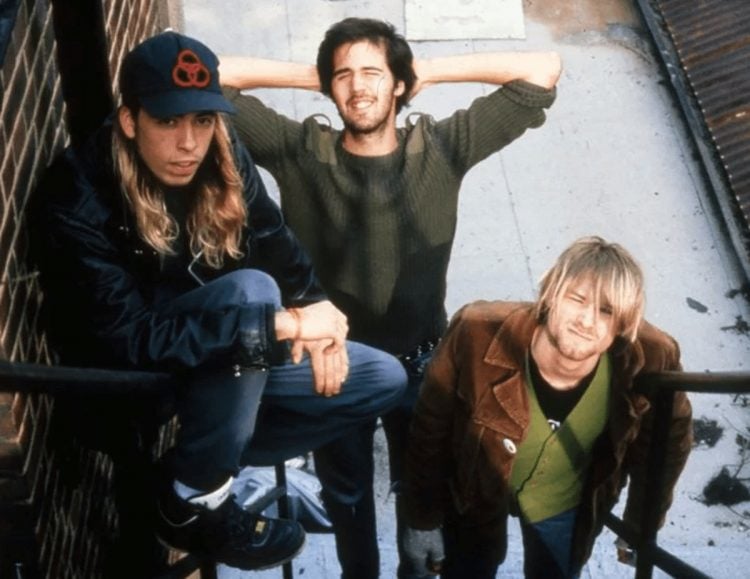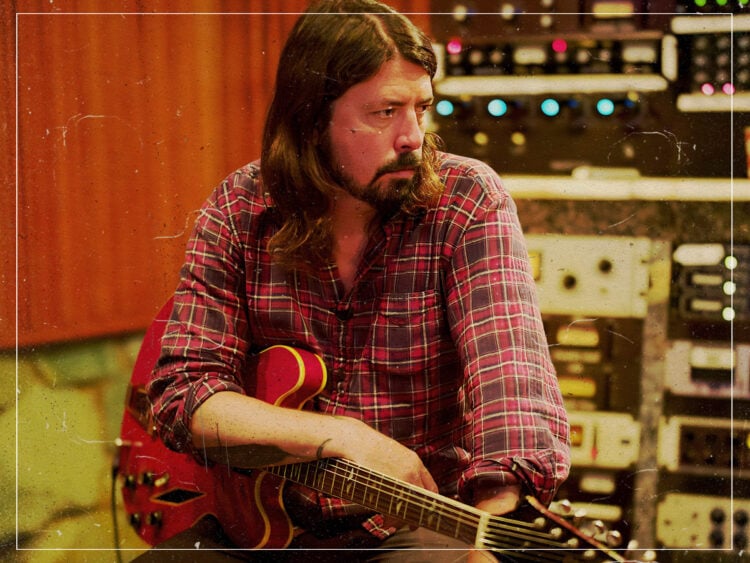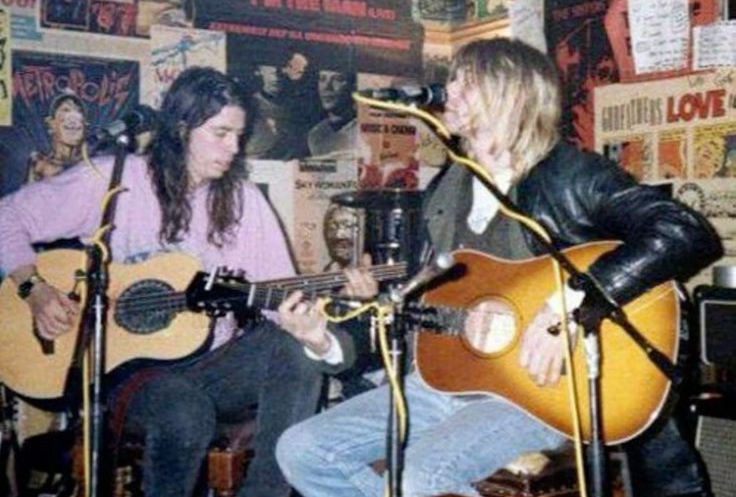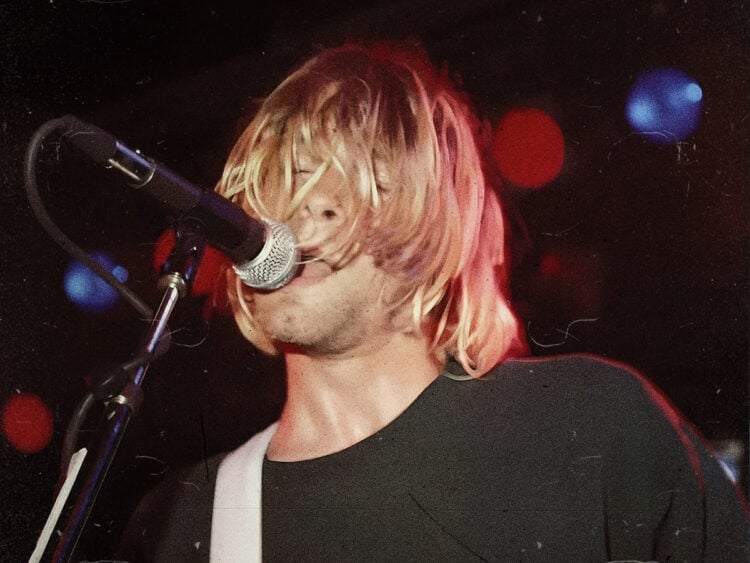What would Nirvana’s fourth album sound like?
The entire wave of alternative music was brought to a standstill when news of Kurt Cobain’s death broke. Although Nirvana never had that much output while Cobain was alive, what fans were left with was the wildest music of the 1990s, from alternative anthems to caustic rock and roll. If Cobain had managed to conquer his demons, though, what would the future of Nirvana have looked like?
In these situations, fans point to the song ‘You Know You’re Right’ as a preview of what a fourth Nirvana outing would have been like. Marking the last time all three band members were in the studio together, Cobain’s impassioned scream brought a dark undercurrent to the track that felt like the logical extension of what was happening on In Utero.
Although there are common elements between Nirvana’s early work on that one single, Cobain was never satisfied resting on his laurels. From Bleach onward, Cobain toyed with people’s expectations of his music, which initially led him to make the blatant switch towards minimalist production on In Utero. If he were to make another Nirvana record, it would have to be something different than the usual grunge formula.
Since the rest of grunge had slowly started to jump on the alt-rock bandwagon or reinvent themselves entirely, Nirvana may have had an equally crazy shift in dynamic. Although Cobain thrived on his bandmates bringing the sounds of the album to life, there’s one factor that could have turned the entire band on its head: Dave Grohl.
Operating as the leader of Foo Fighters ever since Nirvana came to an end, Grohl was coming into his own as a songwriter around the time of In Utero and even contributed the song ‘Marigold’ to the single ‘Heart Shaped Box’. Since Cobain was under so much pressure to write all the material, bringing in Grohl could have put a different spin on Nirvana’s usual aesthetic.
As opposed to Cobain’s tuneful exorcisms, the songs Grohl wrote for the first Foo Fighters release may have been a way to inject a hint of optimism into the Nirvana format. Operating more like a Lennon/McCartney songwriting team, Grohl’s songs like ‘Along + Easy Target’ or ‘This is a Call’ would be the perfect foil to Cobain’s yet-unfinished songs like ‘Sappy’ or ‘You Know You’re Right’.
While Krist Novoselic was normally left out of the songwriting conversation, a fourth Nirvana album might have allowed him to refine his bass tone even more. Novoselic’s approach to the four-string thrived off of a signature growl, and the next album may have seen him take control of the rhythm section a bit more. Seeing how the band were listening to the early mixes of what would become Soundgarden’s Superunknown, Novoselic may have matched the Sabbath-style low-ending that happened on tracks like ‘4th of July’.
COVER STORY: ENGLISH TEACHER
What would Nirvana’s fourth album sound like?(Credit: Alamy)
MUSIC » FEATURES
What would Nirvana’s fourth album sound like?
Tim Coffman
Mon 31 July 2023 18:00, UK
The entire wave of alternative music was brought to a standstill when news of Kurt Cobain’s death broke. Although Nirvana never had that much output while Cobain was alive, what fans were left with was the wildest music of the 1990s, from alternative anthems to caustic rock and roll. If Cobain had managed to conquer his demons, though, what would the future of Nirvana have looked like?
In these situations, fans point to the song ‘You Know You’re Right’ as a preview of what a fourth Nirvana outing would have been like. Marking the last time all three band members were in the studio together, Cobain’s impassioned scream brought a dark undercurrent to the track that felt like the logical extension of what was happening on In Utero.
Although there are common elements between Nirvana’s early work on that one single, Cobain was never satisfied resting on his laurels. From Bleach onward, Cobain toyed with people’s expectations of his music, which initially led him to make the blatant switch towards minimalist production on In Utero. If he were to make another Nirvana record, it would have to be something different than the usual grunge formula.
Since the rest of grunge had slowly started to jump on the alt-rock bandwagon or reinvent themselves entirely, Nirvana may have had an equally crazy shift in dynamic. Although Cobain thrived on his bandmates bringing the sounds of the album to life, there’s one factor that could have turned the entire band on its head: Dave Grohl.
Operating as the leader of Foo Fighters ever since Nirvana came to an end, Grohl was coming into his own as a songwriter around the time of In Utero and even contributed the song ‘Marigold’ to the single ‘Heart Shaped Box’. Since Cobain was under so much pressure to write all the material, bringing in Grohl could have put a different spin on Nirvana’s usual aesthetic.
As opposed to Cobain’s tuneful exorcisms, the songs Grohl wrote for the first Foo Fighters release may have been a way to inject a hint of optimism into the Nirvana format. Operating more like a Lennon/McCartney songwriting team, Grohl’s songs like ‘Along + Easy Target’ or ‘This is a Call’ would be the perfect foil to Cobain’s yet-unfinished songs like ‘Sappy’ or ‘You Know You’re Right’.
While Krist Novoselic was normally left out of the songwriting conversation, a fourth Nirvana album might have allowed him to refine his bass tone even more. Novoselic’s approach to the four-string thrived off of a signature growl, and the next album may have seen him take control of the rhythm section a bit more. Seeing how the band were listening to the early mixes of what would become Soundgarden’s Superunknown, Novoselic may have matched the Sabbath-style low-ending that happened on tracks like ‘4th of July’.
Granted, a new Nirvana project would never be doom and gloom all the time. Even though Cobain never wanted to play the role of a pop star, one clue to his musical state of mind towards the end came from one of the last famous gigs they ever played: MTV Unplugged.
While most of the night consisted of Nirvana hits that had just been released off In Utero, what’s important to this discussion is Cobain’s choice of covers. Throughout the night, Cobain’s interest in acts like Lead Belly and David Bowie would have also played a hand in what any future songs may have sounded like. Though Bowie’s ‘The Man Who Sold the World’ had a lot in common with the style of songs coming out of Seattle, Cobain may have seen The Starman as a guide, being the model of what can happen if he goes in the opposite direction of what his fans wanted.
If this style of Nirvana album were to happen, though, it would have probably been later rather than sooner. Considering how hectic his life had become, Cobain would have needed to get help for his drug dependency and his emotional struggles. Though the sessions for the album started months before he was found dead, Cobain would most likely extend the album’s production, leading to the album being released around 1996 instead.
punk roots or leaving the past behind for something even more daring.
Regardless of how the record sounded, Nirvana would never put anything out that they saw as half-hearted. Throughout his career, Cobain maintained a close relationship with all of his songs, and any album with his name on it would be straight from his heart.
Even with the break, there’s a good chance that the fourth record could have split the band, with everyone going their separate ways and Grohl eventually forming Foo Fighters anyway to keep his songwriting going. Fans have been subjected to the table scraps of those sessions, but something tells me that Cobain wasn’t finished telling his musical story.



